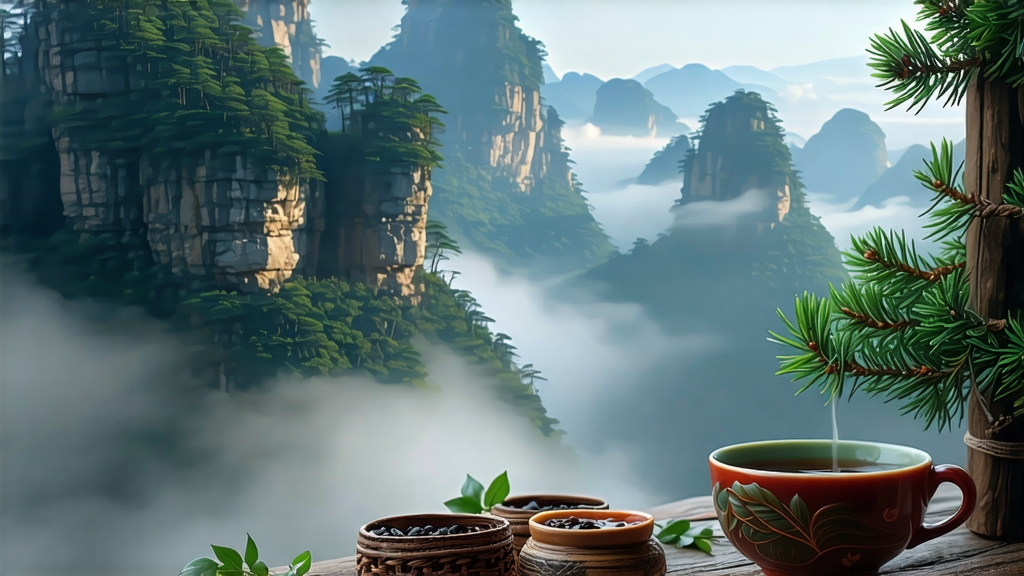
Ask most tea lovers to name China’s oldest black tea and the answer is the same: Lapsang Souchong. Born in the cool, mineral-rich folds of the Wuyi Mountains of north-west Fujian, this leaf is the progenitor of every black tea now produced on earth. Its story begins in the late Ming dynasty, around 1604, when passing soldiers commandeered a tea factory near Tongmu village and delayed the normal drying schedule. To save the harvest, workers rushed the leaves over open pine fires; the resulting smoky, copper-red liquor captivated the first Dutch merchants who carried it to Europe, launching the West’s centuries-long romance with “bohea” and “souchong.” From that accident came an industry: the Qing court soon chartered the first export companies, and by the early nineteenth century Lapsang Souchong was the most expensive tea sold in London, out-pricing even the finest Keemun.
Geography is the first secret. Tongmu lies inside a national nature reserve where the altitude climbs quickly from 600 m to 1 800 m, the air is permanently moist with cloud-drip, and the soil is a loose, acidic laterite laced with quartz and granite fragments. The indigenous cultivar is Xiao Ye Zhong (“small-leaf seed”), a slow-growing bush that rests in winter fog and awakens in April, developing a thick cuticle and a high ratio of polyphenols to chlorophyll—ideal raw material for oxidative transformation. Because pesticides are forbidden inside the reserve, insect bites naturally trigger the plant’s defense compounds, adding a subtle honeyed note that survives even the famous smoke.
Today the family tree has branched into two distinct styles. Traditional Lapsang Souchong (Chinese trade code “Zheng Shan Xiao Zhong”) is still dried over resinous Masson pine fires built on the ground floor of a two-storey wooden barn; the upper floor holds bamboo trays of withering leaf, and smoke is drawn upward by natural draft. The modern “unsmoked” or “craft” version omits the final pine-firing, relying instead on long withering, gentle rolling and precise oven-drying to showcase the cultivar’s innate cocoa, longan and dried-fruit character. Both styles share the same plucking standard—one tender bud plus the first two leaves—picked before the Qingming festival when amino acids peak.
Processing follows a choreography unchanged for four centuries. After picking, the leaves are laid 3 cm deep on large bamboo sieves set in an attic warmed only by residual heat from the pine hearth below; moisture drops from 78 % to 64 % over eight hours, while grassy volatiles dissipate. Rolling comes next: 55 min of light pressure that ruptures 65 % of cell walls without breaking the leaf spine, releasing catechins and polyphenol oxidase that will later polymerize into theaflavins and thearubigins. Oxidation is carried out in rectangular wooden boxes lined with wet cotton cloth; temperature is held at 24 °C with 85 % humidity for 2 h 45 min, during which the leaf turns from jade green to mahogany. The critical “guo hong” (dry-firing) step uses 80 °C pine smoke for 15 min, then 70 °C for a further 45 min, reducing moisture to 6 % while impregnating the leaf with guaiacol and syringol—the molecules responsible for the tea’s signature campfire aroma. Finally, a charcoal-finishing roast at 60 °C for 30 min refines texture and fixes the smoky layer beneath sweeter malt tones.
To brew Lapsang Souchong well, treat it like a Burgundy: respect its terroir, but do not fear its power. Start with soft, neutral water brought to 95 °C; hard water accentuates tannin and flattens the elusive lychee note. Use 4 g of leaf for 120 ml in a thin-walled porcelain gaiwan; the rim diameter should be 8 cm to allow smoke to escape yet retain aroma. Rinse for three seconds, then steep the first infusion for eight seconds, adding one second for each subsequent pour. The liquor emerges the colour of antique copper, bright and slightly viscous. On the nose you will find three ascending layers: an initial spark of pine resin, a mid-palate of dried longan and dark honey, and a lingering cocoa